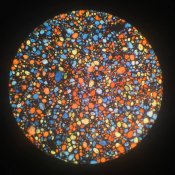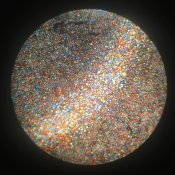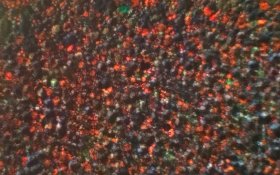You will probably need two dyes to achieve panchromaticity. One will be for red and the other for green. I have not found any panchromatic dyes available on the market at the present time. In addition, I have not found any panchromatic emulsions being supplied either.
You may even need a blend of 3 emulsions, One undyed blue sensitive, and one each dyed green and red. The reason is that adding the dyes decreases blue sensitivity and can repress it enough that there is not enough blue sensitivity left to record the blue image properly in daylight.
You will have to do a dye series to determine which dye level is proper for the emulsion and dye combination. The correct level is based on the surface area of the grain and follows a Langmuir adsorption curve.
I had to buy 4 dyes to get 2 good ones, so the hidden cost in these dyes is that you have to pay for R&D and cannot just go buy one and be sure that it will work out of the bottle. Even knowing what I was doing only gave me a success rate of 50%.
To properly test your work, you will want to have access to a spectrosensitometer. This instrument puts out an equal energy spectrum of 400 - 700 nm through a step wedge, and is used to judge the senstivity and balance of the emulsion (daylight, tungsten and etc). If you wish, I can supply you with examples off-line.
Assuming you succeed, you then have the problem of coating the emulsion facing you. Doing this in total darkness, as I have said before is not trivial if you wish to have the uniformity needed for good quality. I can do the green just fine, but doing the red sensitive emulsion generally leads to problems in the dark.
I have blue and green emulsions which have ISO speeds of about 12 - 25 right now, and I have just made an emulsion with ISO 50 in the raw state. These are not easy to make or sensitize. I have about 50 grams of each made up right now. I am still testing the ISO 50 emulsion and will likely use up this batch just in testing. I have formulas for faster ones that I intend to make and which are reported to be in the range of 100 - 200.
I have, at present, had no thoughts regarding distributing these, but we can discuss this off-line if you wish. I have no tests run on the keeping characteristics of the emulsions and have no idea how well they would ship. They keep well in my refrigerator in the raw state for months, but sensitized versions are used up so rapidly in testing that I have no good data yet. Also, the proper addenda to restrain keeping fog and stabilze the emulsions are hard to get and expensive. But, they also often decrease speed, so we are on the horns of a dilemma to get optimum results and this requires tedious iterative experiments. I am in the midst of them.
PE








